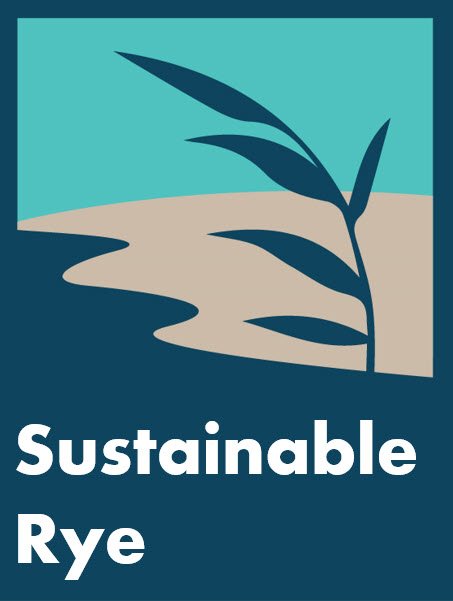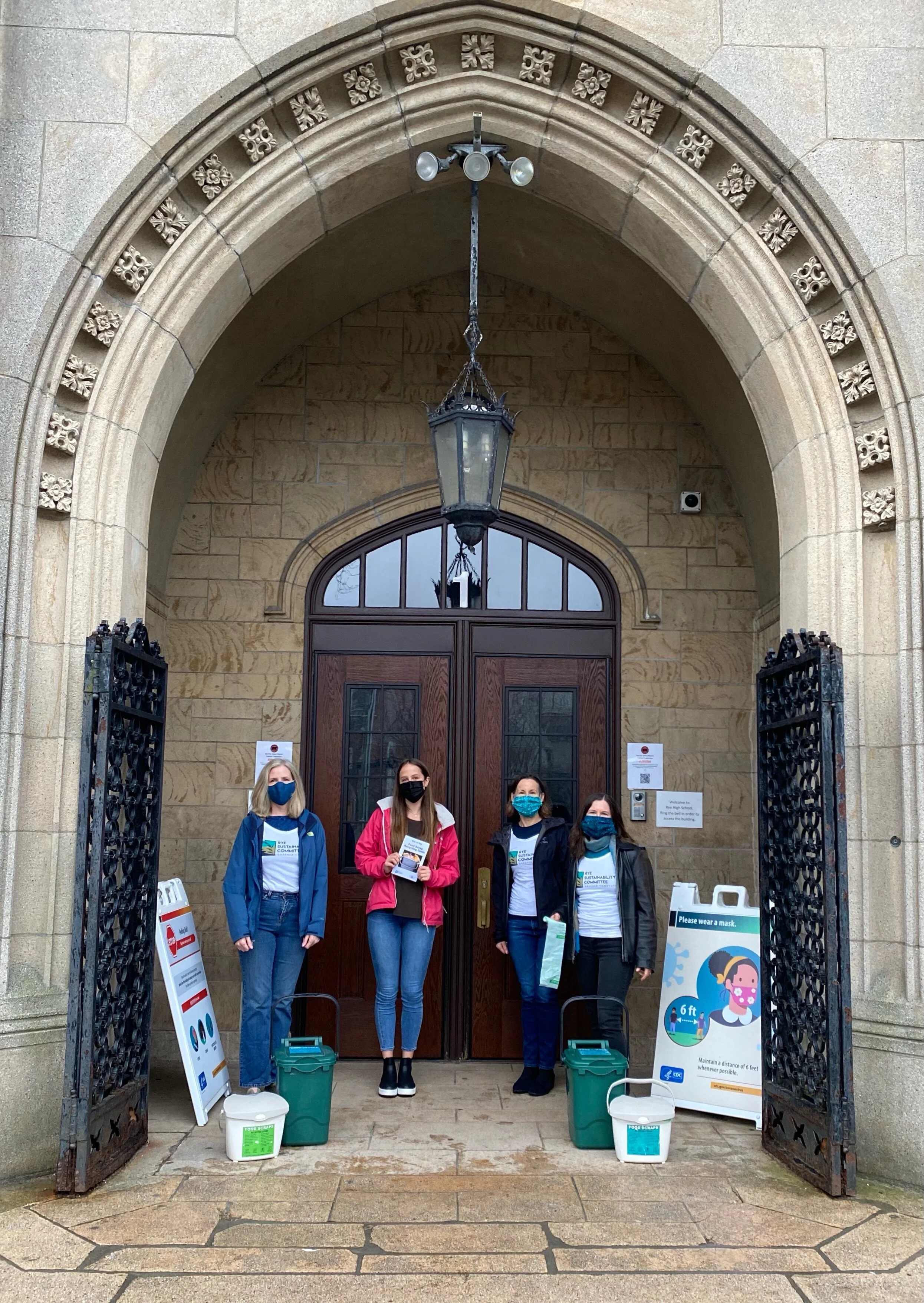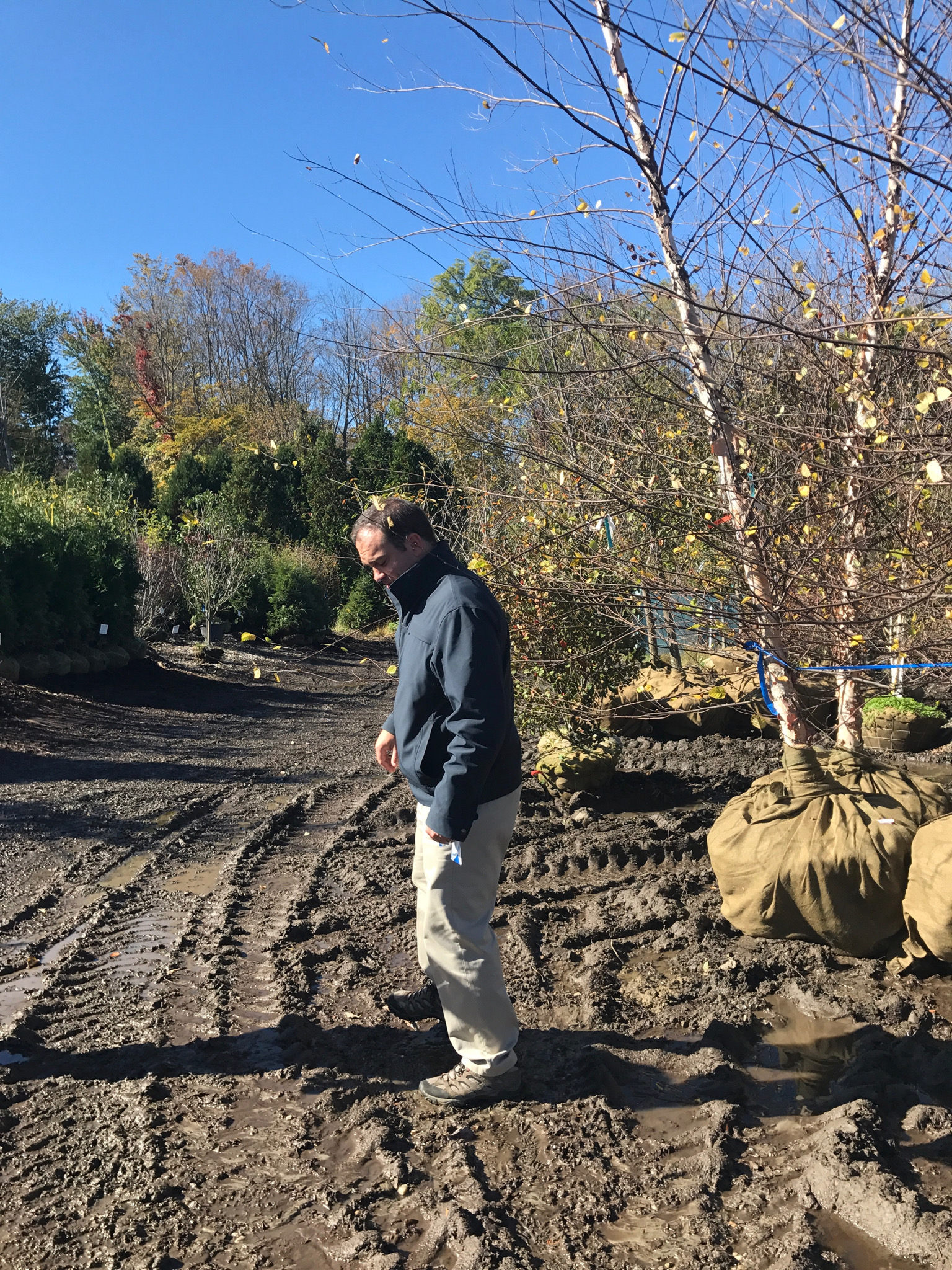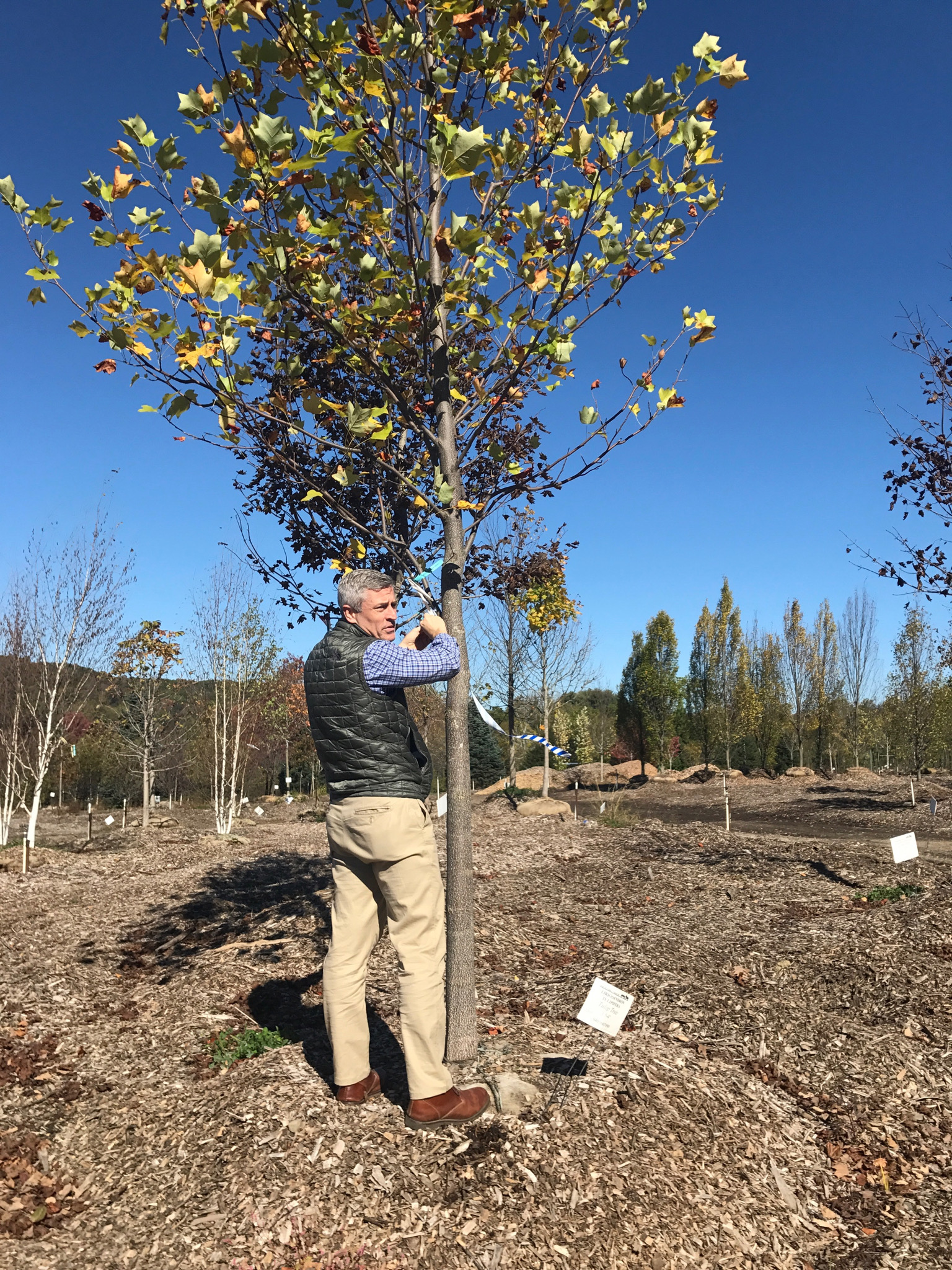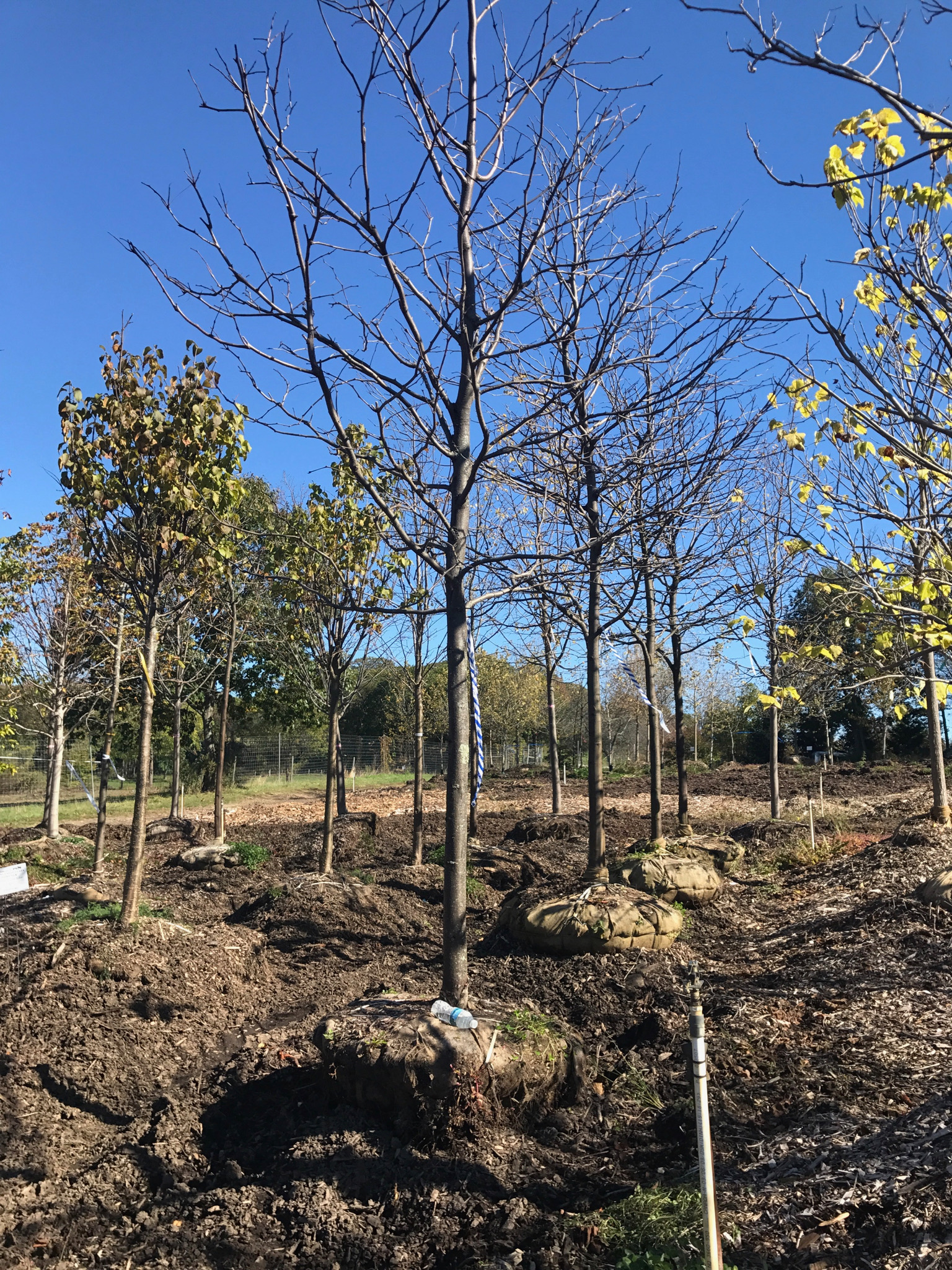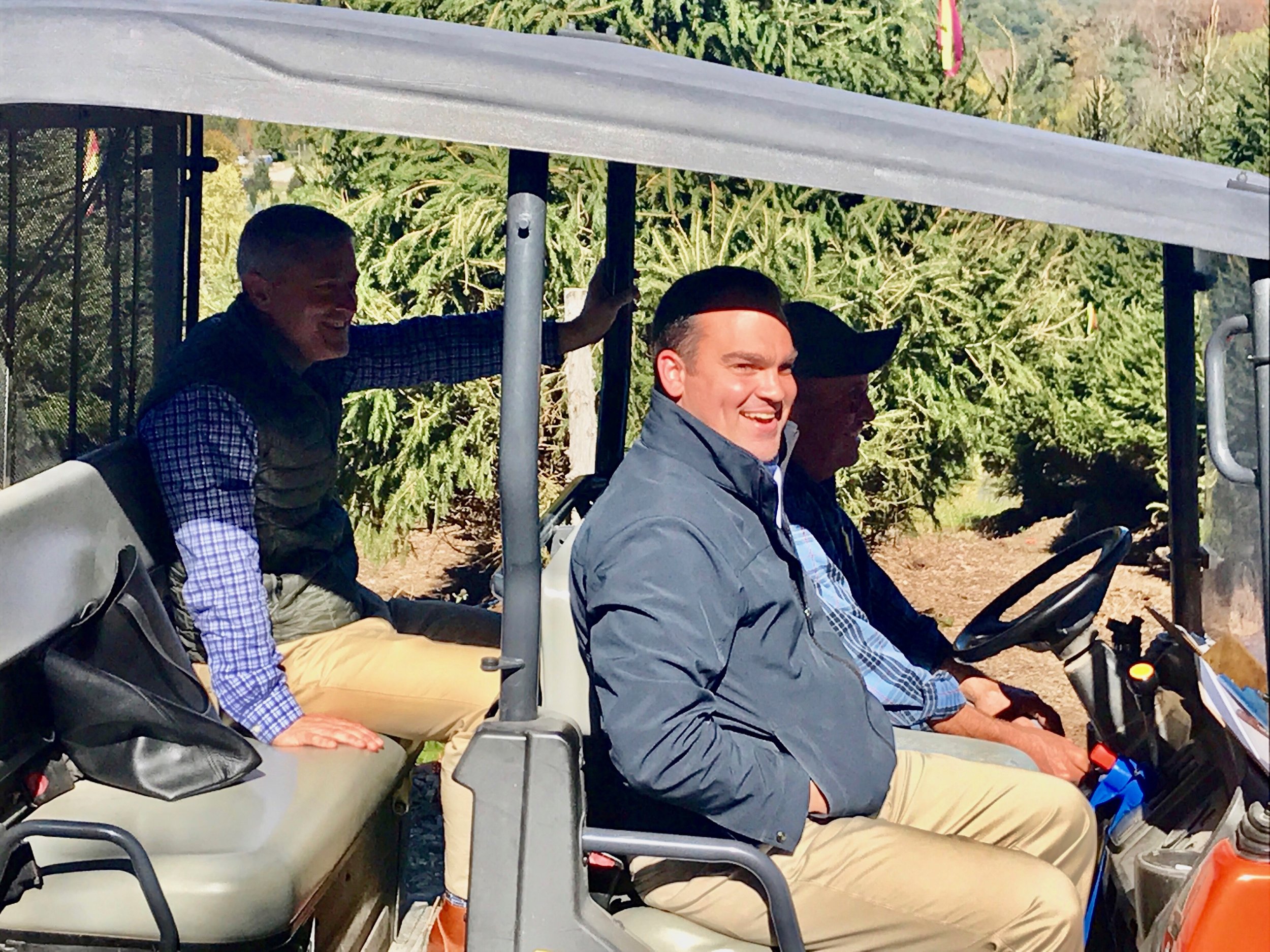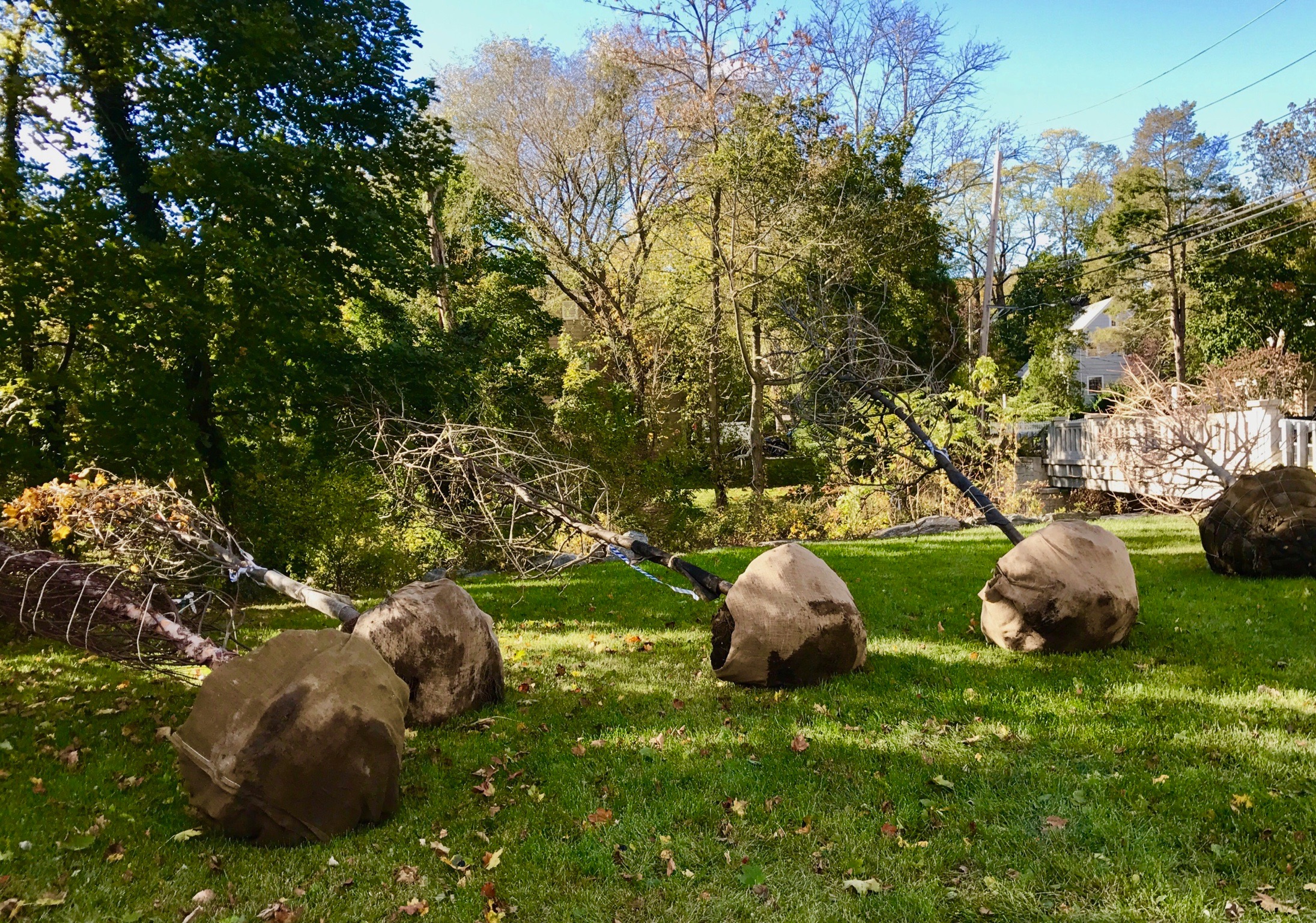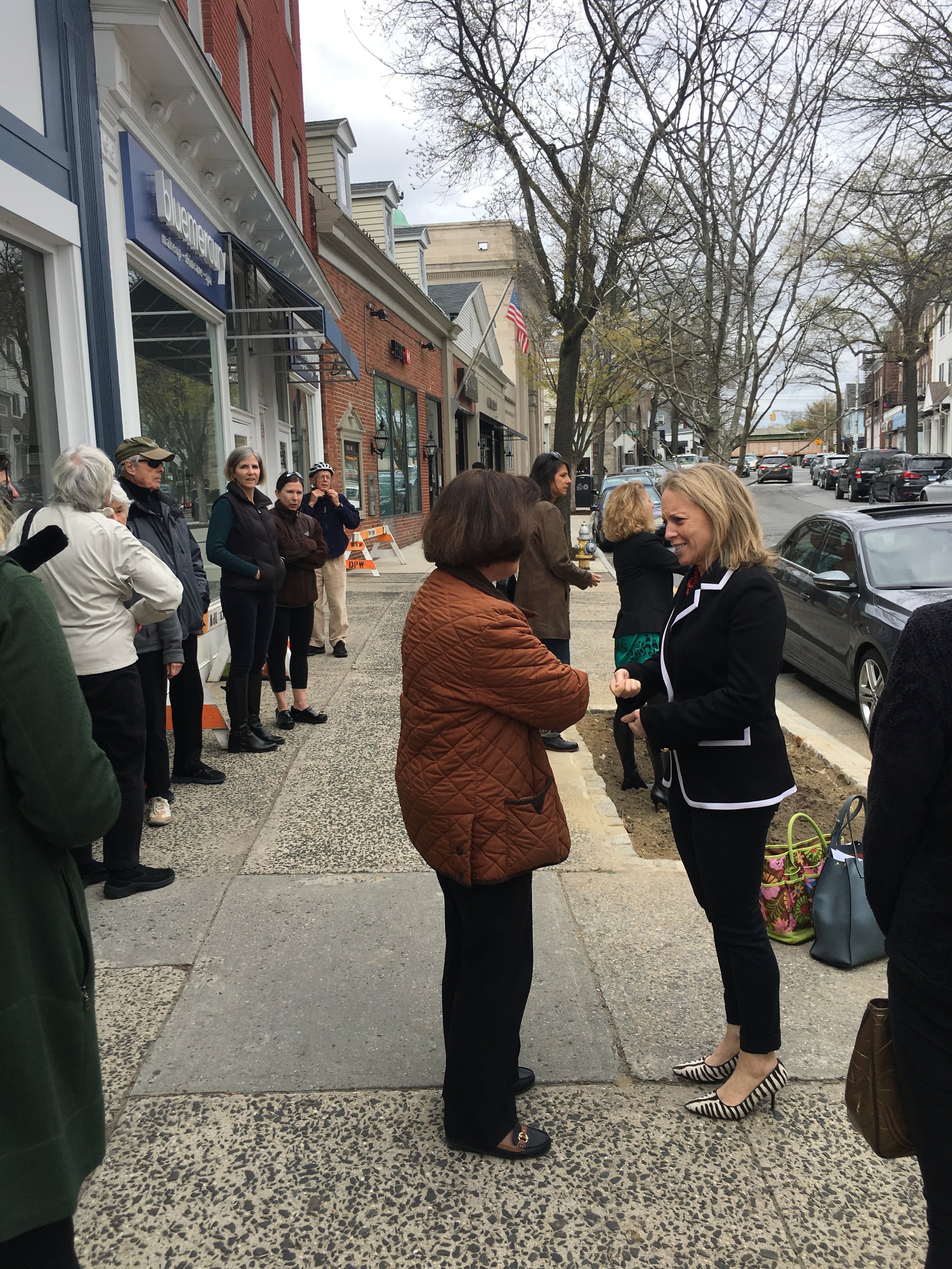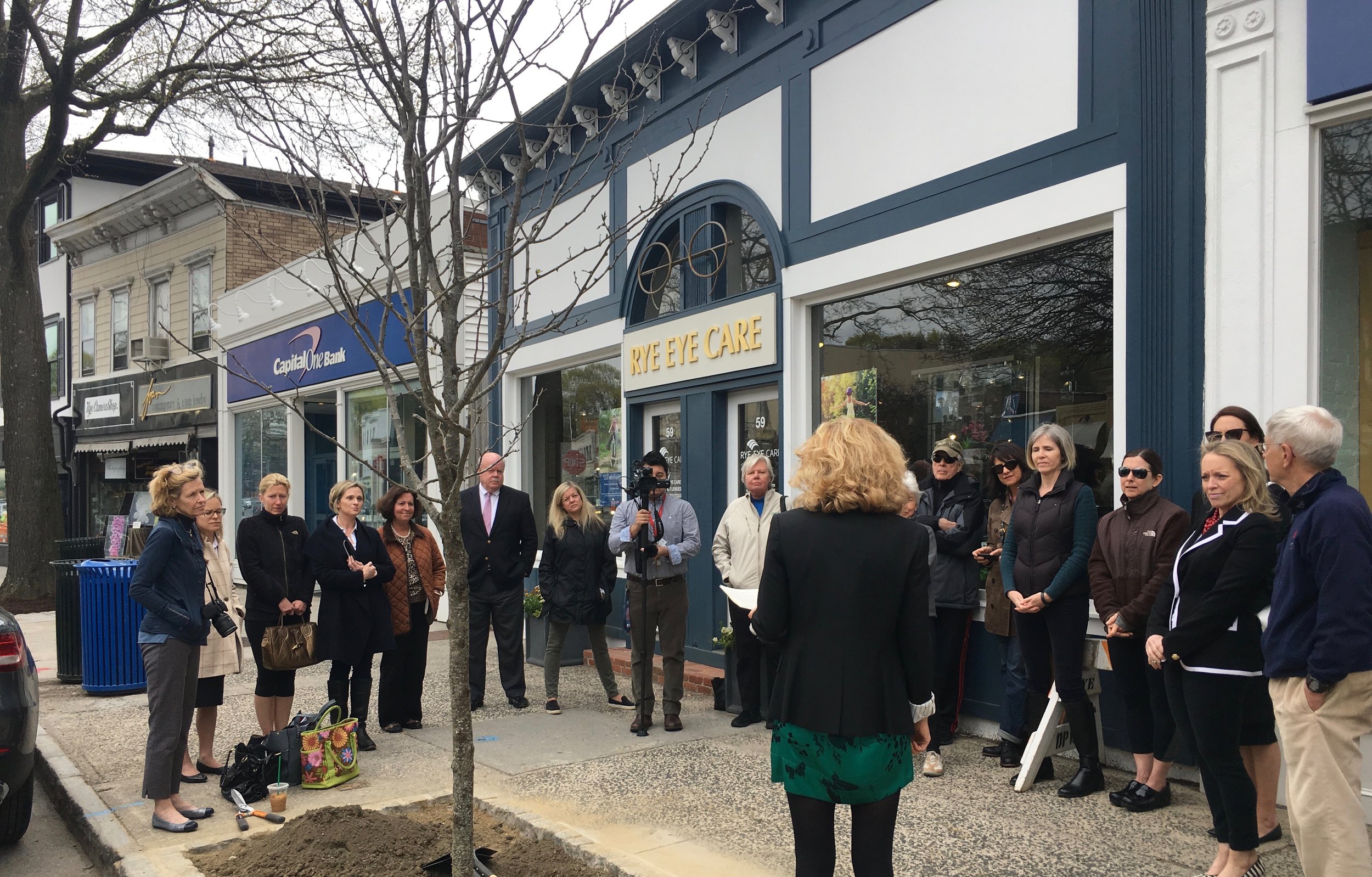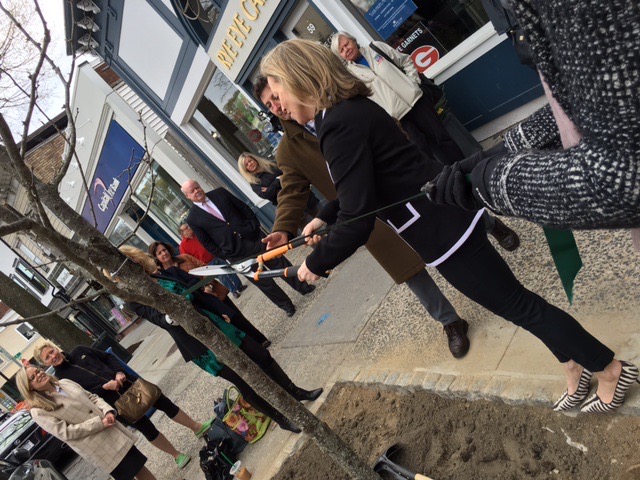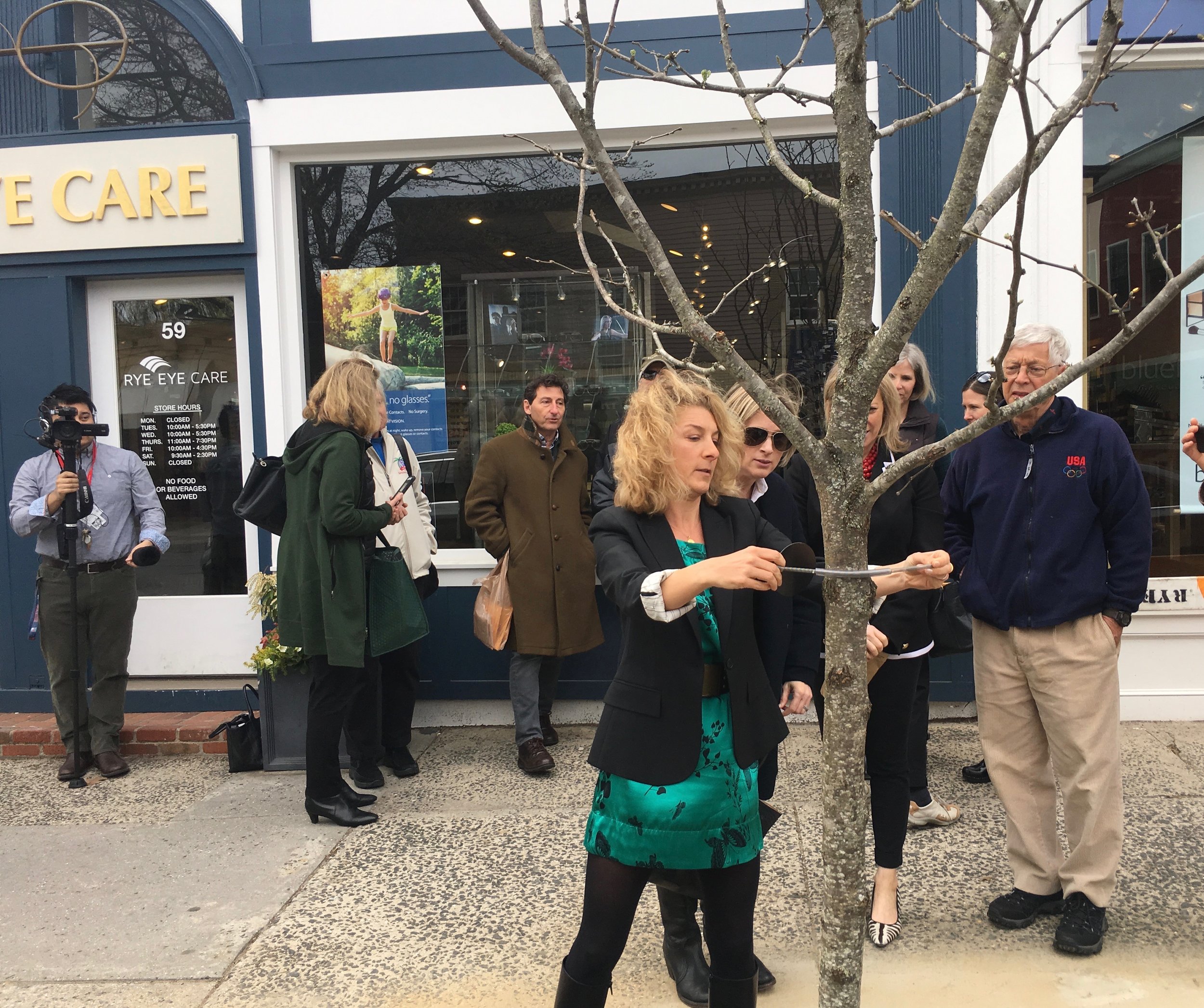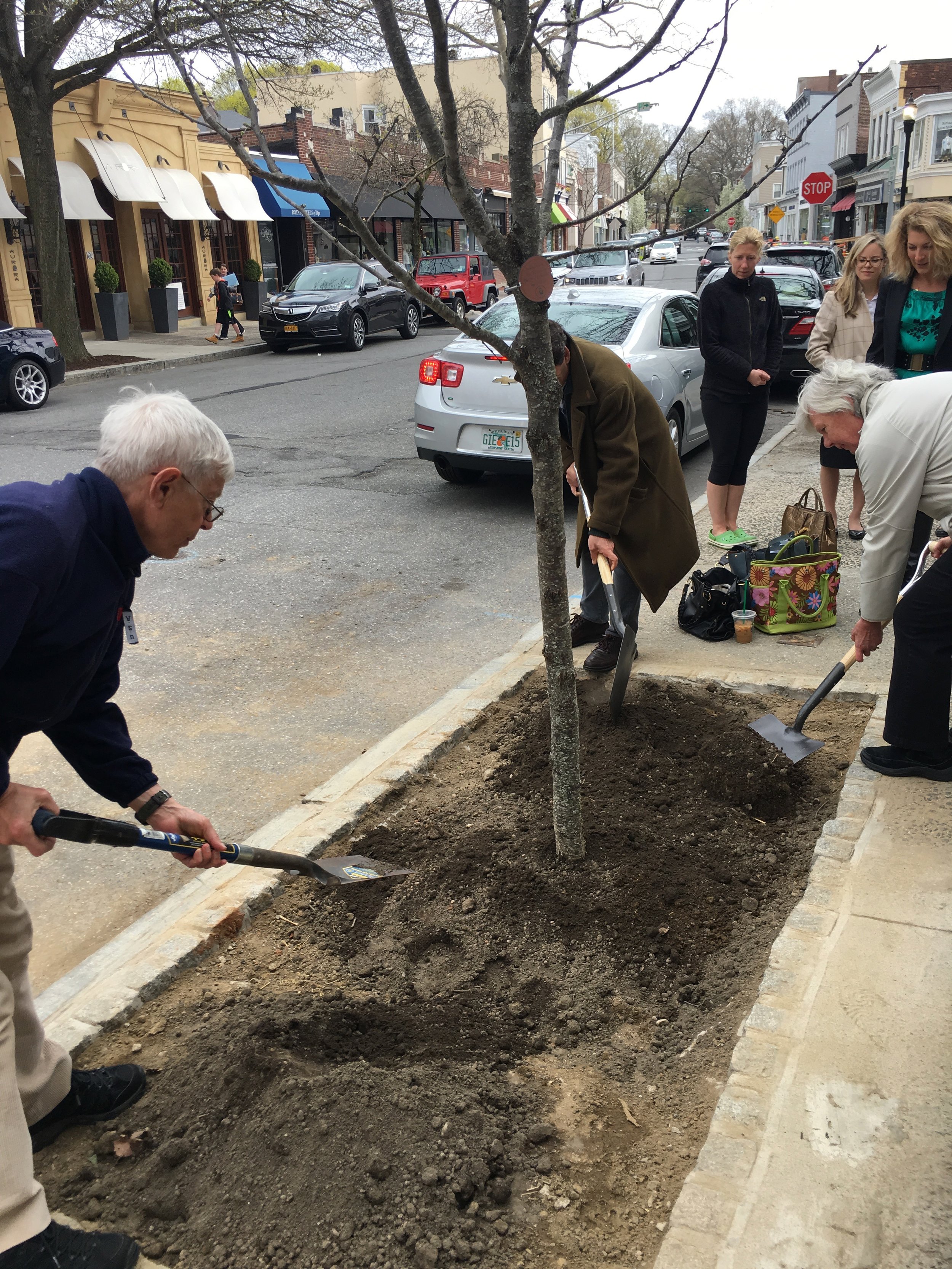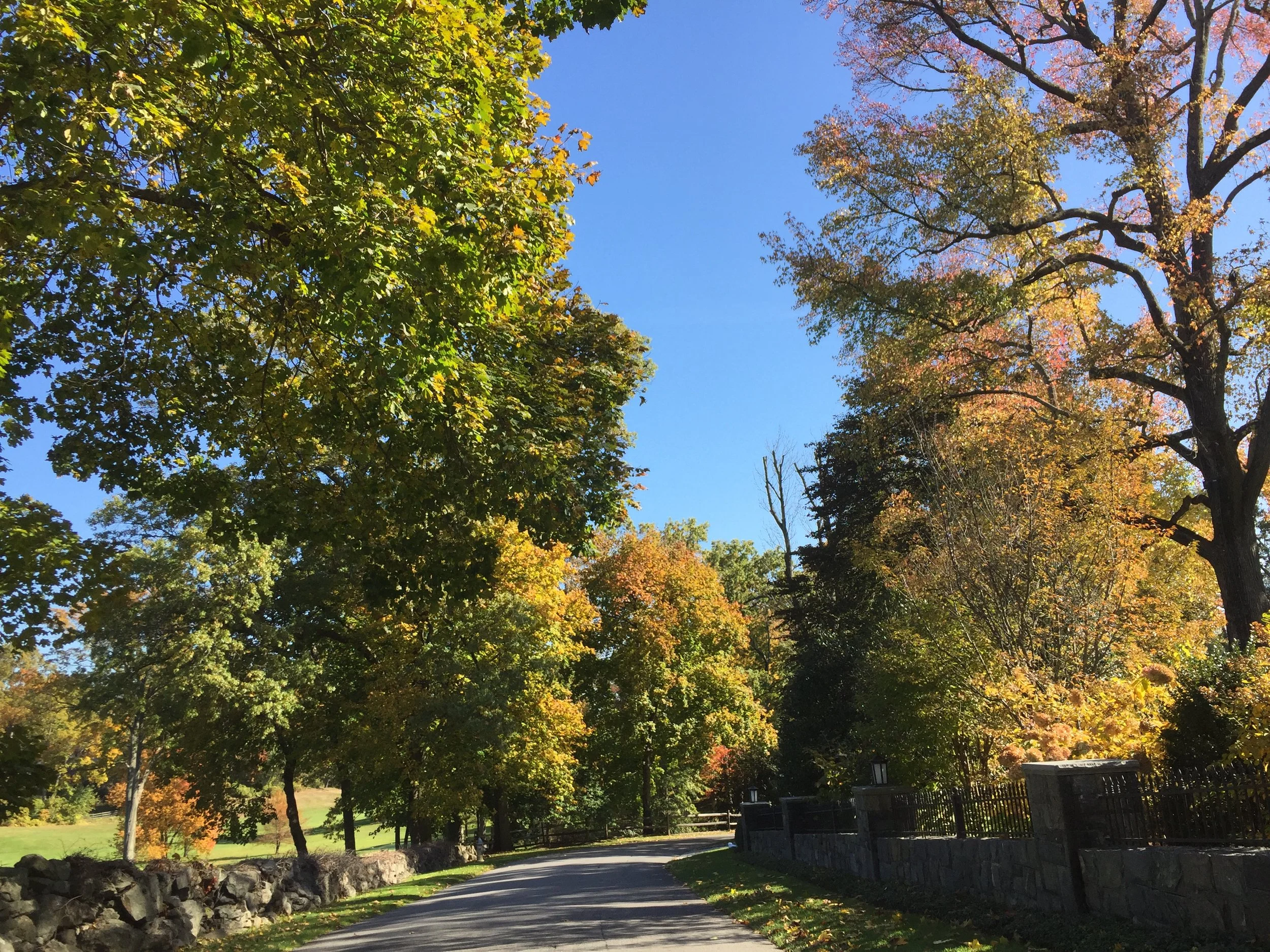October 12 - Rye City’s official Arbor Day! Rye Sustainability worked to reinstate Rye City as a Tree City USA. The official celebration of this important designation occurred next to the new native tree plantings on Purchase Street. Mayor Cohn read a proclamation announcing October 12 as Arbor Day, followed by a ribbon cutting. Thanks to donors to the Rye Tree Fund who made the new plantings possible. For more information on the benefits of trees visit the RSC Tree Fund Page.
Watch Rye TV’s coverage of the event here.
RSC Chair Melissa Grieco's Arbor Day Remarks
Happy Rye Arbor Day everyone and welcome to this Arbor Day observance and ribbon cutting ceremony.
As you may already know, the City of Rye was reinstated as a Tree City USA in 2017 after a long lapse of 11 years. Before 2017, Rye was last designated as a Tree City back in 2006, so it's wonderful that we are now back in business as a tree city once again!
This ceremony today is first and foremost a celebration of the importance of trees to our municipality. Trees confer innumerable benefits on our community including:
reducing heating and cooling costs
enhancing property values
cleaning the air
providing habitat for wildlife
And, this is a big benefit for flood-prone Rye, trees are being increasingly recognized for their importance in managing stormwater runoff. In urban and suburban settings a single deciduous tree can intercept from 500 to 760 gallons per year; and a mature evergreen can intercept more than 4,000 gallons per year! Trees also filter out pollutants that would otherwise wind up in Blind Brook and the Long Island Sound in a rainfall event, which we seem to be getting a lot of lately.
Unfortunately, we are losing trees in Rye at an alarming rate due to old age, disease, extreme weather events (which are also happening more frequently) and of course we are losing trees to construction and development.
That is why it's great to see that the Rye Department of Public Works has done a beautiful job with this little plot of land here in our downtown and has planted some native grasses and shrubs as well as these two native trees, a redbud and red maple.
The funding for the planting of these two trees came from the City of Rye Sustainability Committee Tree Fund. The Rye Tree Fund collects donations of any amount from Rye residents to defray the costs associated with the purchasing, planning, planting and pruning of native municipal street trees. All the Tree P's, as we like to call them.
I'd like to thank several people today.
Arbor Day Proclamation
Firstly I want to thank our Mayor Josh Cohn for all he has done to help Rye become reinstated as a Tree City USA. As I just mentioned, there was a long lapse of 11 years when we did not receive the recognition and it is only with our Mayors endorsement and backing that we were able to reach Tree City USA status once again. This is a big accomplishment for this current administration and one that we should all be proud of.
And a huge thank you to City Engineer Ryan Coyne and his staff for their work in transforming this little patch of land into a native plant oasis. And for all their work in getting Tree Fund subsidized native street trees planted throughout Rye which encompass a bunch right here along Purchase Street including Thornless Honey Locusts, Red Maples, American Lindens and more.
Thank you to all the City Staff including Marcus Serrano, Christian Miller, Joe Fazzino, Melissa Johanessen, Kristin Wilson, Carolyn D'Andrea and others who have helped along the way with the implementation and success of the tree fund.
Thank you to Rye Sustainability Committee City Council liaison, Sara Goddard, for her unwavering support and advocacy.
And a big thank you to all Tree Fund donors past and present, several of whom are here today.
With that, I'd like to turn things over to Mayor Cohn to read out the official Arbor Day Proclamation after which he'll sign it with this homemade quill (decorated with native grasses of course). And then we'll have a ribbon cutting to mark this wonderful tree planting and occasion.
